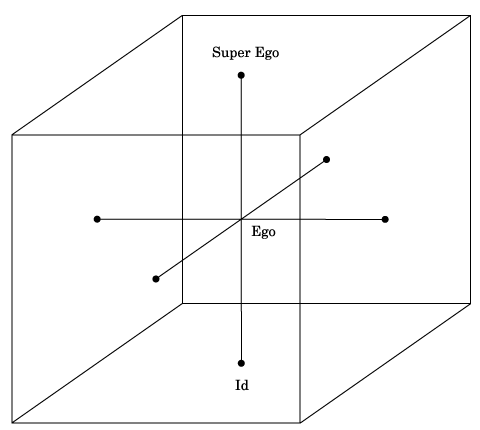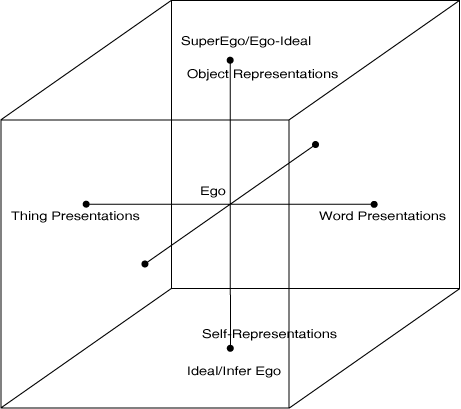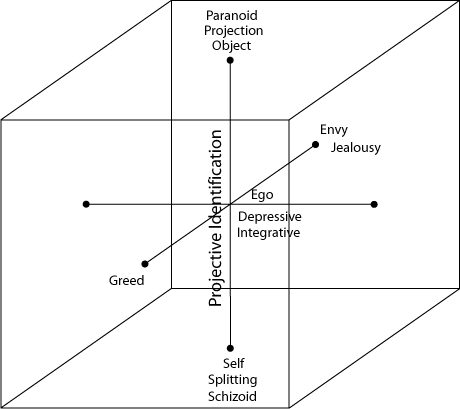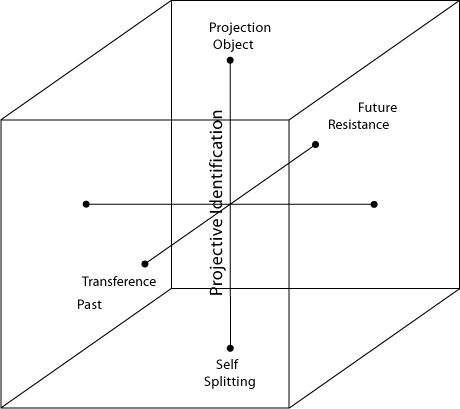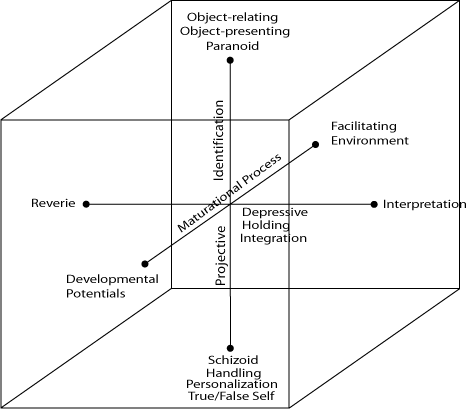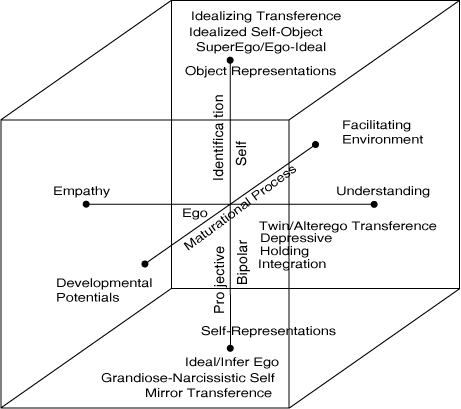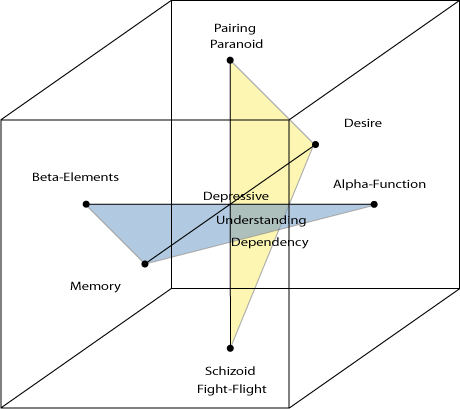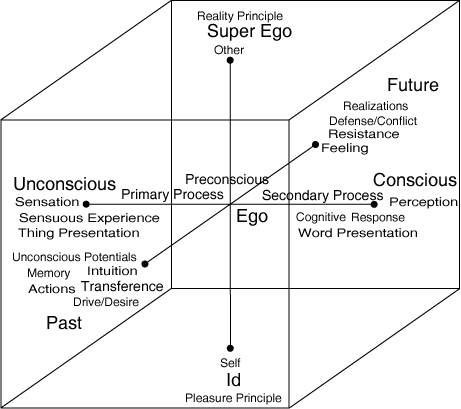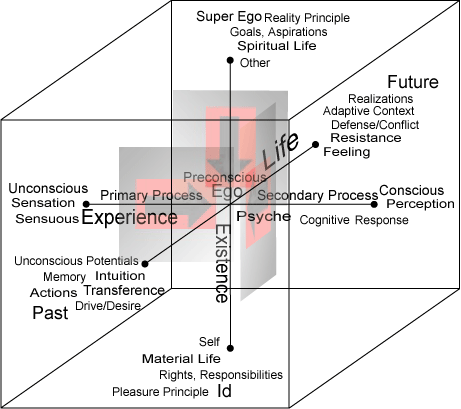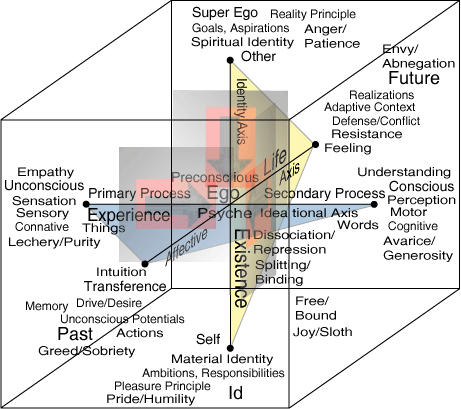
Sepher Yetsira Index
Cube of Space: Cognitive and Psychoanalytic/Psychodynamic Mappings | |||||||||||||||||||||||||||||||||||||||||||||||||||||||||||||||||||||||||||||||||||||||||||||||||||||||||||||||||||||||
An Integrated Framework for the Metaphors of Embodied Existence | |||||||||||||||||||||||||||||||||||||||||||||||||||||||||||||||||||||||||||||||||||||||||||||||||||||||||||||||||||||||
| See also: Metapsychology of the Cube of Space | |||||||||||||||||||||||||||||||||||||||||||||||||||||||||||||||||||||||||||||||||||||||||||||||||||||||||||||||||||||||
Psychological Space: It's Not Just a Metaphor | |||||||||||||||||||||||||||||||||||||||||||||||||||||||||||||||||||||||||||||||||||||||||||||||||||||||||||||||||||||||
|
Psychological space is a conceptual metaphor
which connects or fuses the two conceptual domains of
Psyche and Space, or Mind and Body, or Spirit and Matter. At its core, the metaphor of psychological space
is an oxymoron -- its domains are not unrelated
(like More is Up and Women are Dangerous) -- but fundamental opposites and contradictions.
What is the metaphor of psychological space a metaphor for? Where is the space, and where, or what, is the psyche?
The discovery of linear perspective in the early 15th century, which signified the dawn of virtual space, lifted imaginative, representational space out of two dimensions, and into a 3-D slice of space-time with an individualized point of view, giving birth to the modern "I." Perspectival representation provided Western consciousness with an interior, three-dimensional, virtual reality model of external reality. The next step -- taken over the past five hundred years in Western Philosophy and Psychology -- was to examine the interior, psychological space itself, and to develop representations or maps of internal reality. Despite its common usage, the metaphor of psychological space itself remains ill-defined and largely two-dimensional. We will develop an integrated, three-dimensional perspectival model of internal, psychological space, where the embodied experience of life in existence is virtually created. We begin by freeing Freud from Flatland. | |||||||||||||||||||||||||||||||||||||||||||||||||||||||||||||||||||||||||||||||||||||||||||||||||||||||||||||||||||||||
Freud: First Typography | |||||||||||||||||||||||||||||||||||||||||||||||||||||||||||||||||||||||||||||||||||||||||||||||||||||||||||||||||||||||
|
Freud's first map of the human psyche, formulated at the end of the 19th Century,
resulted from his work with dreams, jokes, slips of the tongue, and hysterical
female patients and divided psychological reality into three parts -- an unconscious area,
a preconscious area, and a conscious area associated with perception.
| |||||||||||||||||||||||||||||||||||||||||||||||||||||||||||||||||||||||||||||||||||||||||||||||||||||||||||||||||||||||
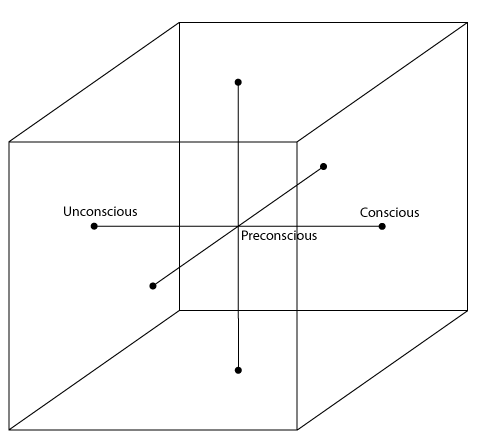
| |||||||||||||||||||||||||||||||||||||||||||||||||||||||||||||||||||||||||||||||||||||||||||||||||||||||||||||||||||||||
Freud: Second Typography (Structural Model) | |||||||||||||||||||||||||||||||||||||||||||||||||||||||||||||||||||||||||||||||||||||||||||||||||||||||||||||||||||||||
|
Freud's second map of the human psyche, developed over the next twenty years, was also a tri-partite
model, consisting of
Id (unconscious, instinctually-based and driven),
Ego/I (conflict-ridden and compromised) and Superego (punitive, mostly unconscious, society-surrogate).
| |||||||||||||||||||||||||||||||||||||||||||||||||||||||||||||||||||||||||||||||||||||||||||||||||||||||||||||||||||||||
| |||||||||||||||||||||||||||||||||||||||||||||||||||||||||||||||||||||||||||||||||||||||||||||||||||||||||||||||||||||||
Freud: First and Second Typographies: Structural Models | |||||||||||||||||||||||||||||||||||||||||||||||||||||||||||||||||||||||||||||||||||||||||||||||||||||||||||||||||||||||
|
Freud's metapsychologies are really multi-dimensional mappings of the human psyche, collapsed
to fit a two-dimensional conceptual topography. Id, Ego and Superego are not completely the
same categories as Unconscious, Preconscious and Conscious . The shift from the first to the
second typography was actually a shift in dimensionality.
Freud's Structural Model is not a replacement for his First Typography -- the concepts simply could
not be differentiated within the limited dimensionality of the map. We can see now that the first
typography was a map of the sensory-perceptual axis while the second structural model represented
a shift in categories to a completely different axis of psychological reality -- the axis of
existence, which con-sists of a Self that "stands out" and ex-ists in relation to an Otherness --
in both the individual unconscious and the bodies of society, law and religion.
| |||||||||||||||||||||||||||||||||||||||||||||||||||||||||||||||||||||||||||||||||||||||||||||||||||||||||||||||||||||||
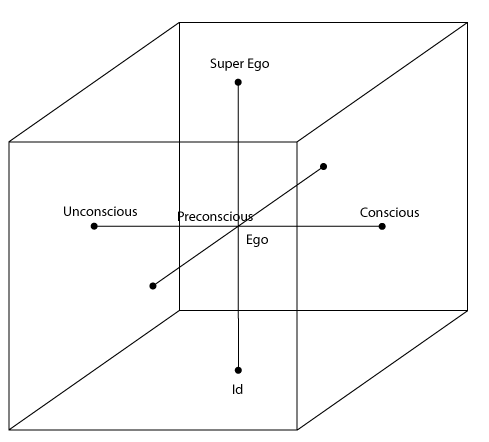
| |||||||||||||||||||||||||||||||||||||||||||||||||||||||||||||||||||||||||||||||||||||||||||||||||||||||||||||||||||||||
Freud: Unfolded 3-D Model | |||||||||||||||||||||||||||||||||||||||||||||||||||||||||||||||||||||||||||||||||||||||||||||||||||||||||||||||||||||||
|
The third dimension latent in Freud's map is found in his dynamic concepts of drive and defense
and transference and resistance, and
is responsible for the developmental aspects of his theory. Having run out of space on his map,
Freud was unable to adequately differentiate important structural categories like his concepts of drive/desire and
defense/conflict. The Ego or "I" defends itself with compromise formations against both
unconscious desires based on infantile instinctual fixations and the demands of an interior
authority structure which forbids and punishes gratification. The Ego/I borrows energy from
the Id in the form of substitute gratifications and constructs itself out of lost object-connections
through the work of mourning to form personality structure (charactized by different defense mechanisms, neurotic styles, etc.).
These are metaphors of psychological process and development and properly belong to another set of categories
and dimensionality -- in this case the category of Life as past, present and future, and the psychological
dimensions of time.
We can now return to Freud's first discovery, the Unconscious, and realize that it is a much bigger category than it initially seemed -- and it was big enough to start with -- and even more slippery. Or maybe it only seems that way to our rather small consciousnesses. All seven major aspects of Freud's typographical and structural theories -- unconscious, conscious, id, superego, drive, defense and preconscious/conflict/ego, overlap with the general category of "unconcious." Even consciousness itself, which Freud once defined as "a symptom." In a differentiated map, we can see that the Unconscious of the first typography is a special kind of unconscious unconsciousness that is rooted in our mostly unconcious (Damasio) biological experience of senusual bodily reality. On the other hand, the Consciousness of the same typography is a special kind of conscious unconsciousness, aware of itself being unconscious. The Id, the Unconscious of the second typography, is the material source of the unconscious energy of the self as well as identifying characteristics and self-interests and dispositions which are not simply instinctual. The Superego in Freud is a piece of the higher Id which has direct access to the Ego and is somehow society's representive in, or colonization of, the psyche. Here we can note that Freud's Processes -- Primary and Secondary -- belong to the experiential axis of the first typography, while his Principles -- Reality and Pleasure -- belong to the second typography and the existential axis of itness, I and over-I. Finally, the axis of drive and defense (both unconscious processes in Freud's theory) is uniquely temporal and developmental, and in fact determines the path and direction of one's life as unconscious "fixations" determine psychological development and affect the course of the future. So we have to give up on the idea of a single, simple unconscious. All the categories we are dealing with, even consciousness itself, are unconscious, or consciousness structured in a particular way. The primary quality of the Id, its "Itness," or impersonality, is a characteristic of all of the dimensions or categories that constitute experience, life and existence, except for the central Ego. Freud's Id is really the projection of six different psychological dimensions (organized two-by-two) onto one surface. It is interesting that the direction of the Id -- down -- was gradually replaced by infer--ideal-egos, self-representations and narcissistic, grandiose selves. The Id has six dimensions of "Itness," including the Itness of the Self, the Itness of the Other, and the Itness of material, sensuous reality and its objects. Now we need to understand the dimensions and organization of these different "unconsciousnesses" and their particular roles in the structuration of multidimensional psychological experience and reality. | |||||||||||||||||||||||||||||||||||||||||||||||||||||||||||||||||||||||||||||||||||||||||||||||||||||||||||||||||||||||
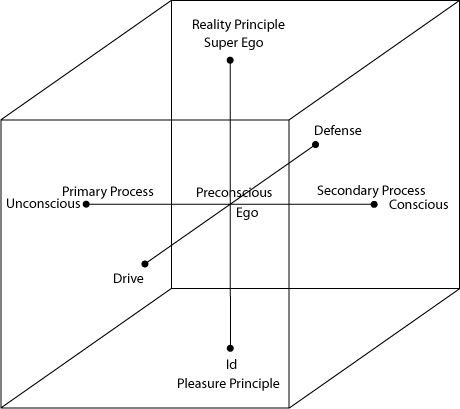
| |||||||||||||||||||||||||||||||||||||||||||||||||||||||||||||||||||||||||||||||||||||||||||||||||||||||||||||||||||||||
Psychoanalysis: Object Relations Theory | |||||||||||||||||||||||||||||||||||||||||||||||||||||||||||||||||||||||||||||||||||||||||||||||||||||||||||||||||||||||
Twenty-five years later, that question has been answered by the contrary view aging out of the psychoanalytic field. When Freud discovered the Unconscious, he inadvertantly discovered the baby by way of infantile sexuality. The history of psychoanalysis is largely the history of the revision of its ideas of the baby, first in response to social learning and dependency and attachment theories (Ainsworth and Bowlby) and its own work with children, and then modern cognitive and neurological science. We now know that the baby is a much more conscious and organized and relational being than Freud thought. The baby as conceived by Freud is an unconscious "cauldron of seething excitement" filled with biologically driven life and death instincts which are initially concerned with primary, undifferentiated narcissistic states and later with the autoerotic stages -- Oral, Anal, Phallic -- of infantile sexuality. These instincts have aims (satisfactions) that really only concern true objects during the Phallic and Oedipal phases, three or four years or so after birth. The problem is clear: in the Id, Ego and Superego, where, or what, is the object? Psychoanalysis as an intrapsychic theory side-stepped the problem of objectivity by introducing a representational theatre into the mental apparatus, consisting of an ever-increasing cast (in approximate order of appearance) of differentiated objects, ego-ideals and ideal-egos, alter egos, partial objects, object representations, self representations, self-object representations, self-self-object representations and horizontal and vertical splits in the representational stage. We can see where this is going, but to return to the question, Freud's use of object is based in his idea of the interaction of two (neurological) systems -- a word system and an object system. These manifest in mental functioning as word (Wortvorstellung) and thing (Sachvorstellung) presentations. As the baby of psychoanalysis matured, it made increasingly complex differentiations and distinctions about its psychological functioning and relationship to external reality. In the process, the important distinction between the object and the relationship was obscured by the need to develop a theory of selves and others. As we have seen, many of Freud's ideas were conflated or forced to the periphery by too many important word-presentations in too small a conceptual space. First, Ego expanded into Ego Psychology and then reached out to the other through Object Relations Theory, eventually leaving large parts of the Id behind or surplanting It with Self Psychology and other partial theories. As we follow the progress of psychoanalysis in developing object relational theories based on selves and others in interaction, we don't want to lose the object part of object (re)presentation to the categories of self and other, because it is the thing-in-itself, not the other, that roots us in -- or plugs us into -- material reality, and we'll need it later.
| |||||||||||||||||||||||||||||||||||||||||||||||||||||||||||||||||||||||||||||||||||||||||||||||||||||||||||||||||||||||
| |||||||||||||||||||||||||||||||||||||||||||||||||||||||||||||||||||||||||||||||||||||||||||||||||||||||||||||||||||||||
Psychoanalysis: Klein: PS->D | |||||||||||||||||||||||||||||||||||||||||||||||||||||||||||||||||||||||||||||||||||||||||||||||||||||||||||||||||||||||
|
The history of psychoanalysis is its resistance to the Other in its own Unconscious as intersubjectivity.
Ego psychology was the slippery slope that led to object relations which led to part-object relations,
which led to self-object relations,
which led to self relations which led to self-psychology which almost led to relationality,
which was disavowed at every step by the orthodoxy of Freudian Psychoanalysis.
Anna Freud and Melanie Klein worked with children (as did Winnicott) and observed the importance of early childhood relationships. Klein mapped out a (pre-Oedipal) psychic world of partial self and object representations, related to the external world through a mechanism called projective identification, the basis of empathy. Greed, envy and jealousy appear as dominant emotional states in schizoid -- based on splitting -- and paranoid -- based on projection -- developmental positions. With adequate caregiving, these yield to the depressive position and a structuration of the ego/self. These are Klein's paranoid-schizoid-depressive positions, signified by PS->D implying their resolution. See Revisions to PS<->D | |||||||||||||||||||||||||||||||||||||||||||||||||||||||||||||||||||||||||||||||||||||||||||||||||||||||||||||||||||||||
| |||||||||||||||||||||||||||||||||||||||||||||||||||||||||||||||||||||||||||||||||||||||||||||||||||||||||||||||||||||||
|
| |||||||||||||||||||||||||||||||||||||||||||||||||||||||||||||||||||||||||||||||||||||||||||||||||||||||||||||||||||||||
Psychoanalysis: Transference and Projective Identification | |||||||||||||||||||||||||||||||||||||||||||||||||||||||||||||||||||||||||||||||||||||||||||||||||||||||||||||||||||||||
|
Transference, the heart of Freud's clinical theory, is defined as the unconscious projection
and repetition of past relationships and patterns of expectation onto the present. In another example of not
enough space on the conceptual map, Freud classified transference as a form of unconscious resistance against
the instinctual drives or drive-derivatives contained in the transference pattern (defined by
unconscious fixations at multiple levels of infantile sexual development).
Projective Identification, based on the hypothetical mechanisms of projection and introjection, describes a dynamic process of (again, unconscious) communication or interchange between subjects-in-relation. Projection and introjection or identification obviously have to do with selves and others or internal self and object representations. Transference, on the other hand, emphasizes past patterns of unconscious behavior or expection projected onto the present (actually future) situation/relationship. The concept of projective identification was forced on an intrapsychic psychoanalytic theory to explain first, early childhood development, and pathological and normal forms of relatedness. It clearly has no metapsychological basis in Freud's theory. Transference should be understood as a pattern (the psychological past determines the psychological future) while projective identification is the process by which transference happens -- influencing both self and other. Transference is not resistance any less than drive is not defence. The concepts are more usefully differentiated as complementary polarities (transference-resistance, drive-defense) belonging to different categories and dimensions of psychological reality. Transference and resistance: our resistance to our unconscious past perceived in the present determines the future. Projective identification: the self exists in relation to otherness; the pattern of self-other organization (splitting and projection) is the actualization of the transference in both internal and external relationships. Projection and introjection are metaphors for communication or interchange of energy/information between the polarities of self and other, across the not-self boundary through internal object relations to external reality. In the intersubjective, this communication is known as projective or projective-introjective identification. It comes in good and bad forms, empathy and ruthlessness. | |||||||||||||||||||||||||||||||||||||||||||||||||||||||||||||||||||||||||||||||||||||||||||||||||||||||||||||||||||||||
| |||||||||||||||||||||||||||||||||||||||||||||||||||||||||||||||||||||||||||||||||||||||||||||||||||||||||||||||||||||||
|
| |||||||||||||||||||||||||||||||||||||||||||||||||||||||||||||||||||||||||||||||||||||||||||||||||||||||||||||||||||||||
Psychoanalysis: Winnicott | |||||||||||||||||||||||||||||||||||||||||||||||||||||||||||||||||||||||||||||||||||||||||||||||||||||||||||||||||||||||
|
D.W. Winnicott, the great transitional
theorist, published "The Maturational Process and the Facilitating Environment" in 1951 and is responsible
for the the metaphor of space itself in psychotherapy, lifting the map out of two dimensions and creating a framework for
intersubjectivity with the interplay of projective identification in a potential space inhabited by
transitional objects
and transitional phenonmena.
Winnicott, whose formative experience as a clinician was treating children traumatized by World War II and its aftermath, opened transitional space to external reality and relationality. Psychoanalyis would never be the same. The progress of Psychoanalysis in the 20th century can be mapped by its successive formulations of Drive Theory, Ego Psychology, Object Relations Theory, Borderline Personality and Self Psychology. Melanie Klein considered instinctual drives to be inherently object-seeking, and was a major figure in the transition from Classical Psychoanalysis to Object Relations. Klein had a rather grim view of the psychological world of the infant, involving fragmentation, murderous impulses and cannibalistic phantasies based on death instincts. On the road to the Other, Psychoanalysis seems to have discovered the bad mother before the good mother who followed in her footsteps. Basing his perspective on Klein's work, Donald Winnicott formulated the effect of external reality on the infant in terms of the good-enough mother, whose job with the baby was "primary maternal preoccupation" and "optimal failure." Non-optimal failures -- unendurable absences and frustration, let alone direct abuse -- introduce gaps in the "going on being" of the infant and small child, and produce experiences of annialation and psychotic anxiety.
The mother's job is to fail optimally at her job of primary preoccupation with the baby, by allowing non-destructive, non-retaliatory, frustration to contribute to the formation of inner imaginative experience in the gap between hallucination and gratification. This process of optimal failure and frustration is the facilitating environment. Winnicott connected the innate developmental potentials of the infant and the facilitating environment with his formulation of the maturational process, which optimally produces an integrated true self. Now we are obviously dealing with interactional categories, and a developmental process that happens in time and is dependent on experiences between self and other. Further, the basis for communication is emotional, dependent on empathy and attunement, conceived as a healthy form of projective identification or mirroring. (See the Lacanian Mirror-Phase) Winnicott gave therapists a transitional space to play in, and told them to empathize with the patient's true self. The next fifty years of psychoanalysis would build on Winnicott, not Freud, in its formulations of Borderline Phenomena and Self Psychology and the role of empathy in development and treatment.
| |||||||||||||||||||||||||||||||||||||||||||||||||||||||||||||||||||||||||||||||||||||||||||||||||||||||||||||||||||||||
| |||||||||||||||||||||||||||||||||||||||||||||||||||||||||||||||||||||||||||||||||||||||||||||||||||||||||||||||||||||||
Psychoanalysis: Combined Object-Relation/Self-Object Models: Winnicott + Kohut | |||||||||||||||||||||||||||||||||||||||||||||||||||||||||||||||||||||||||||||||||||||||||||||||||||||||||||||||||||||||
|
Object Relations led to Transitional Phenomena which led to Self Relations and Self Psychology.
Heinz Kohut published The Analysis
of the Self in 1971, twenty years after Winnicott, breaking eventually with Freudian metapsychology
in his emphasis on empathy and relationality. Kohut elaborated Klein's PS->D with his descriptions of
the corresponding transference positions in self formation -- grandiose/narcissistic (mirror), idealizing
and later, alter or twin. Following Winnicott, Kohut based therapeutic progress on the relinguishment
of the archaic self-object, or self-object and self-object, formation, through a process
of optimal frustration of unrealistic narcissism leading to transmuting internalizations.
As Freud researched the reasons for his therapeutic failures, he was forced to expand his concept of resistance from its first location, the Ego, with its mechanisms of defense and transferences, to include Id and Superego "resistances." The particulary "resistant" cases were found to have either too much "libidinal attachment" to the analyst or too strong a "death instinct" in Superego formation. The concept of resistance has no place in either area, and we can now see that the resistance was Freud's own, to recognizing the mirroring and idealizing self-object transferences. Having pushed the envelop of orthodox Freudianism further than it could go, psychoanalytic development toward a metapsychological theory of subjectivity more or less flowed around the problem, splitting into a stream where clinical experience is given priority over empirical data, and a stream that attempts to retain Freud's materialistic monism by updating it with modern cognitive and neurological science. | |||||||||||||||||||||||||||||||||||||||||||||||||||||||||||||||||||||||||||||||||||||||||||||||||||||||||||||||||||||||
| |||||||||||||||||||||||||||||||||||||||||||||||||||||||||||||||||||||||||||||||||||||||||||||||||||||||||||||||||||||||
Psychoanalysis: Bion | |||||||||||||||||||||||||||||||||||||||||||||||||||||||||||||||||||||||||||||||||||||||||||||||||||||||||||||||||||||||
|
How amazingly close and wonderfully different are the two children of Klein, Winnicott and Bion.
Holding environment,
good-enough mother.
Container-contained.
Transitional Space.
Alpha Function,
True and False Self.
Selected Fact.
Reverie.
Learning from Experience.
"Keep alive, keep well, keep awake."
"The Tar-baby said nothing, and Brer Fox, he lay low."
The psychoanalytic world would not see another meme-maker like these two until Robert Langs in the 1980's.
Bion differentiated experience into beta-elements (unprocessed, unexperienced experience, thing-presentations) and alpha-function , which converts beta-elements into dreams, memories and understanding (word-presentations). His advice to therapists is thus to enter the therapeutic space "without memory, desire or understanding" -- no preconceptions from the past, present or future. "Desire" is problematic here as representative of futurity, but it is clear what he meant. Unconscious desire properly belongs to the past, even though it effects our "desires" for the future. He should have said -- "without transference, resistance, or understanding" -- but it would have been harder to implement. Bion puts groups into two categories: work groups (getting things done) and basic assumption groups (acting out primitive fantasies and preventing things from getting done). The three basic assumption groups are fight-flight, corresponding to Klein's paranoid-schizoid postion, dependency, corresponding to Klein's depressive position, and pairing, corresponding to Klein's and Freud's Oedipal fantasy of self formation. Basic assumptions are a substitute for thinking and a way to avoid the pain of reality. Questioning them would require the understanding of unconscious, psychotic processes (splitting and projective identification) in the individual, and catastrophic change. Bion (with Winnicott) probably comes closest to Freud in identifying all the major dimensions of psychological/developmental experience, but again, is constained by the two dimensions of his grid. | |||||||||||||||||||||||||||||||||||||||||||||||||||||||||||||||||||||||||||||||||||||||||||||||||||||||||||||||||||||||
| |||||||||||||||||||||||||||||||||||||||||||||||||||||||||||||||||||||||||||||||||||||||||||||||||||||||||||||||||||||||
Freud Unfolded and Remapped | |||||||||||||||||||||||||||||||||||||||||||||||||||||||||||||||||||||||||||||||||||||||||||||||||||||||||||||||||||||||
|
So now we have something that looks like a fully-articulated three-dimensional model for the two-dimensional projections or slices that we see in Freud's models. This allows for the differentiation and organization of his core metapsychological concepts so their logical relationships may be seen more clearly and also to accord better with neuroscience, cognitive psychology and common experience: psychological space is a space. You just have to open your I to see it. | |||||||||||||||||||||||||||||||||||||||||||||||||||||||||||||||||||||||||||||||||||||||||||||||||||||||||||||||||||||||
| |||||||||||||||||||||||||||||||||||||||||||||||||||||||||||||||||||||||||||||||||||||||||||||||||||||||||||||||||||||||
Expanded Model + Axes of Being + Energetic Flows | |||||||||||||||||||||||||||||||||||||||||||||||||||||||||||||||||||||||||||||||||||||||||||||||||||||||||||||||||||||||
|
The Cube of Psychological Space is an integrated framework for the metaphors of embodied human experience.
The brain is organized anatomically and neurologically in
three dimensions.
The three dimensions of psychological space are the outline or the projection of
a higher-dimensional structure into spacetime. The three axes are related as structuring
polarities of Being -- Existence formed by the oppositions of self and other, Life formed by
the opposition of future and past, and Experience formed by the opposition of sensation
and perception. Linguistically: higher power, lower self, face the future, put the past behind you,
you're left, I'm right. The center cannot hold. The
3-D
spatial pattern
is embedded in
brain
organization
and neurological processing
and
language
and
metaphor
formation.
Inner space is (surprise) a model of outer space (or possibily the other way around)
with the spatial directions replaced with logical categories and dimensions of experience.
These are the dimensions of psychologial space and inner reality. Each deals with a specific category of human being, though six are paired in logical opposites, and a seventh receives all their meanings and energies, and is the door to the inner dimensions beyond developmental space-time. These categories and dimensions "form" the experience of life in existence. | |||||||||||||||||||||||||||||||||||||||||||||||||||||||||||||||||||||||||||||||||||||||||||||||||||||||||||||||||||||||
| |||||||||||||||||||||||||||||||||||||||||||||||||||||||||||||||||||||||||||||||||||||||||||||||||||||||||||||||||||||||
Generalized Model + Emotions as Virtues and Vices | |||||||||||||||||||||||||||||||||||||||||||||||||||||||||||||||||||||||||||||||||||||||||||||||||||||||||||||||||||||||
|
Finally, we add the classical virtues and vices, known in our times as emotions, to our model. First, we can see that the emotional categories fit perfectly with the differentiated psychological dimensions and their polarities. | |||||||||||||||||||||||||||||||||||||||||||||||||||||||||||||||||||||||||||||||||||||||||||||||||||||||||||||||||||||||
|
On the up-down Existential axis, anger/patience and pride/humility are the emotional polarities of the identity of self and other. We get angry at others (or their psychological introjects inside us) and feel ashamed of ourselves for what others might think. On the front-back Life axis, envy/abnegation and greed/sobriety represent the emotional polarities that define the trajectories of our lives: what we envy -- we don't have it but we might get it -- shapes our futures, and our greed -- to amass and accumulate -- builds structures out of unconscious memory. The third, left-right axis of Experience or Interpenetration weaves Identity and Life into an experience of Being with the energies of sense-perception and their associated moral dimensions. The left hand of desire or lechery is in (largely unconscious) contact with sensous reality, both internal and external. The right hand of action shows what perception is: an action towards an action, or a container for both the stimulus and the response. Avarice is a sin of the right hand because it is the action of grasping. | |||||||||||||||||||||||||||||||||||||||||||||||||||||||||||||||||||||||||||||||||||||||||||||||||||||||||||||||||||||||
|
We see things, we reach for them. The desire to acquire what we don't have determines our future choices, our greedy or sober actions define what we have done with the past. We are impatient with others (and self-objects), and full of ourselves with base ambitions. Anger, Pride and Envy are Dante's hot sins, because they determine the evolutionary development of the individual. Now we are in a position to make two critical distinctions and differentions. The first has to do with the overlapping categories of sensation, emotion and feeling. The second has to do with the question of repression and its associated mechanisms, and its relationship to splitting and projection. The first distinction is based on our differentiation of Unconscious from Id, and the recognition of multiple "unconsciousnesses," with different structures or characteristics. Antonio Damasio in "The Feeling of What Happens: Body and Emotion in the Making of Consciousness" considers a "core consciousness" that is able to integrate both object and somatic representations and is thus always emotionally based. Our extended map locates seven centers of emotional (un)consciousness which structure or contribute to Damasio's "self in the act of knowing" -- our now familiar axes of self/other, future/past and sense/perception. In the interests of clear thought, we can now distinguish sensation (the sense part of felt-sense) as the unstructured and unconscious somatically-based sensory input of the experiential axis, from feeling (the felt part of felt-sense) which is how we perceive the future (as our state changes) of the affective/life axis -- and both from emotion, which should be reserved as the general category for the specific qualities or colorations of the seven differentiated centers of emotional consciousness that constitute psychological space and reality. Affect, the catch-all term used by psycho-professionals to separate themselves from the layman's emotions, really belongs to the affective-effective or feeling-intuition axis. Our affects (responses/resistances to the future) effect our actions which become our past. Our unconscious past effects our affects about the future. Only in time can you have either an affect or an effect. | |||||||||||||||||||||||||||||||||||||||||||||||||||||||||||||||||||||||||||||||||||||||||||||||||||||||||||||||||||||||
|
Experience: sense-perception: Unconscious-Conscious: Lechery/Purity-Avarice/Generosity: sensory-motor axis Life: future-past: Resistance/Transference: Envy/Abnegation-Greed/Sobriety: affective-effective axis Existence: other-self: Superego-Id: Anger/Patience-Pride/Humility: self-other in the experience of life: identity axis Psyche: central ego: repression/sublimation: sloth/joy | |||||||||||||||||||||||||||||||||||||||||||||||||||||||||||||||||||||||||||||||||||||||||||||||||||||||||||||||||||||||
|
Now we return to the center. Freud felt that the ego/I had no energy of its own and was thus forced to surreptitiously "steal" energy from the Id in the form of substitute gratifications. This is not completely accurate -- the energy of the ego is a special kind of energy whose function is to bind and release other energies. All the "mechanisms of defense" of the ego are based on its capacity to create patterns of free and bound energy: repression/sublimation, dissociation/integration, mania/depression. Projection and Introjection are metaphors for communication between self and other. An integrated identification consists of both processes. Healthy projective identification is the basis for creativity and empathy (playing in the transitional space). The pathological forms, splitting and paranoid projection, are repressions (bindings) and dissociations (disintegrations) performed toward either self or other -- either pole may be split (partially accepted, partially refused), and energy/information from them I-dentified with (introjected) or reflected back (projected). When they persist in the maturational process of the individual, they are evidence of non-optimal environmental failure, early trauma, and absence of psychological structure in the areas of primitive narcissism and idealization. Metapsychologically, repression is not so much a withdrawal of "cathexis" as its burial. The second and third components of splitting and repression involve identifications and dissociations performed towards our psychological future and unconscious past, and sensory and perceptual funtions. Beta elements cannot be altered (pretty much the definition of objective reality), only un-processed, but Alpha-function can be destroyed in a variety of ways. The important consideration is the location of the central ego/I or Psyche, at the center of the intersection of the differentiated complementary dimensions of psychological reality, which pass through it, like the eye of a needle or the shuttle on the multi-dimensional loom that weaves space-time. | |||||||||||||||||||||||||||||||||||||||||||||||||||||||||||||||||||||||||||||||||||||||||||||||||||||||||||||||||||||||
Meta-Metaphor: 3-D Psychological Space | |||||||||||||||||||||||||||||||||||||||||||||||||||||||||||||||||||||||||||||||||||||||||||||||||||||||||||||||||||||||
| |||||||||||||||||||||||||||||||||||||||||||||||||||||||||||||||||||||||||||||||||||||||||||||||||||||||||||||||||||||||
|
We have seen that all of the partial and conflated mappings of Freudian and many of the Post-Freudian psychoanalytic theories can be assimilated and integrated in the higher-dimensional metaphor of the Cube of Psychological Space. | |||||||||||||||||||||||||||||||||||||||||||||||||||||||||||||||||||||||||||||||||||||||||||||||||||||||||||||||||||||||
|
Psyche: Intersubjectivity | Learning from experience | Bion and Thinking Bion: Basic Assumptions & The Grid | Thinking | Selected Fact Alpha Function | Container and Contained | Transitional Space Perspective | : Revisions to PS<->D | : Splitting and Dissociation Highlights of the Psychoanalytic Literature: A Topical Reading List | |||||||||||||||||||||||||||||||||||||||||||||||||||||||||||||||||||||||||||||||||||||||||||||||||||||||||||||||||||||||
| From Cube: Metapsychology | |||||||||||||||||||||||||||||||||||||||||||||||||||||||||||||||||||||||||||||||||||||||||||||||||||||||||||||||||||||||
| Topographical Diagrams on the Net | |||||||||||||||||||||||||||||||||||||||||||||||||||||||||||||||||||||||||||||||||||||||||||||||||||||||||||||||||||||||
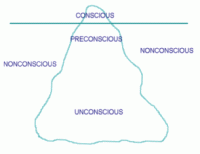
|
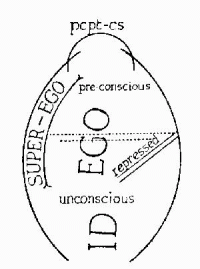
|
| Freud: 1st Typography | Freud: 1st + 2nd Typography |
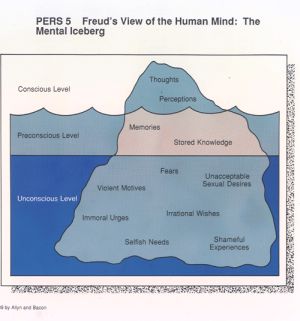
|
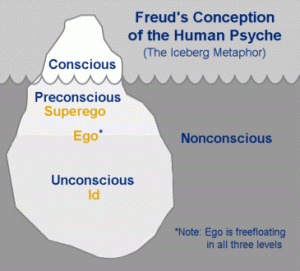
|
| Freud: 1st Typography | Freud: 1st + 2nd Typography |
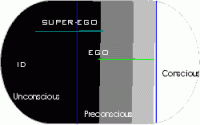
|
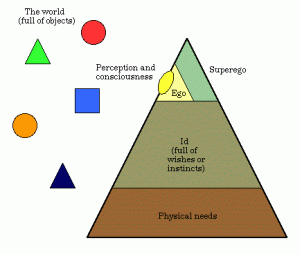
|
| Freud: 1st + 2nd Typography | 1st + 2nd + Object World |
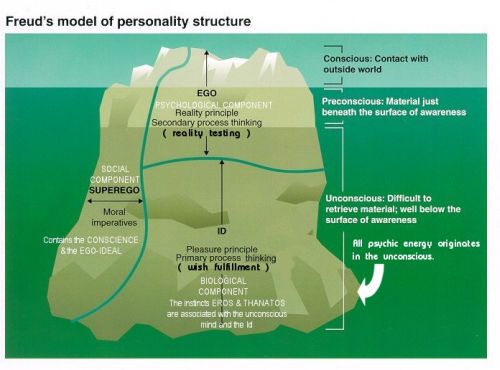
|
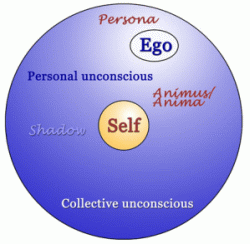
|
|
| Jung |

